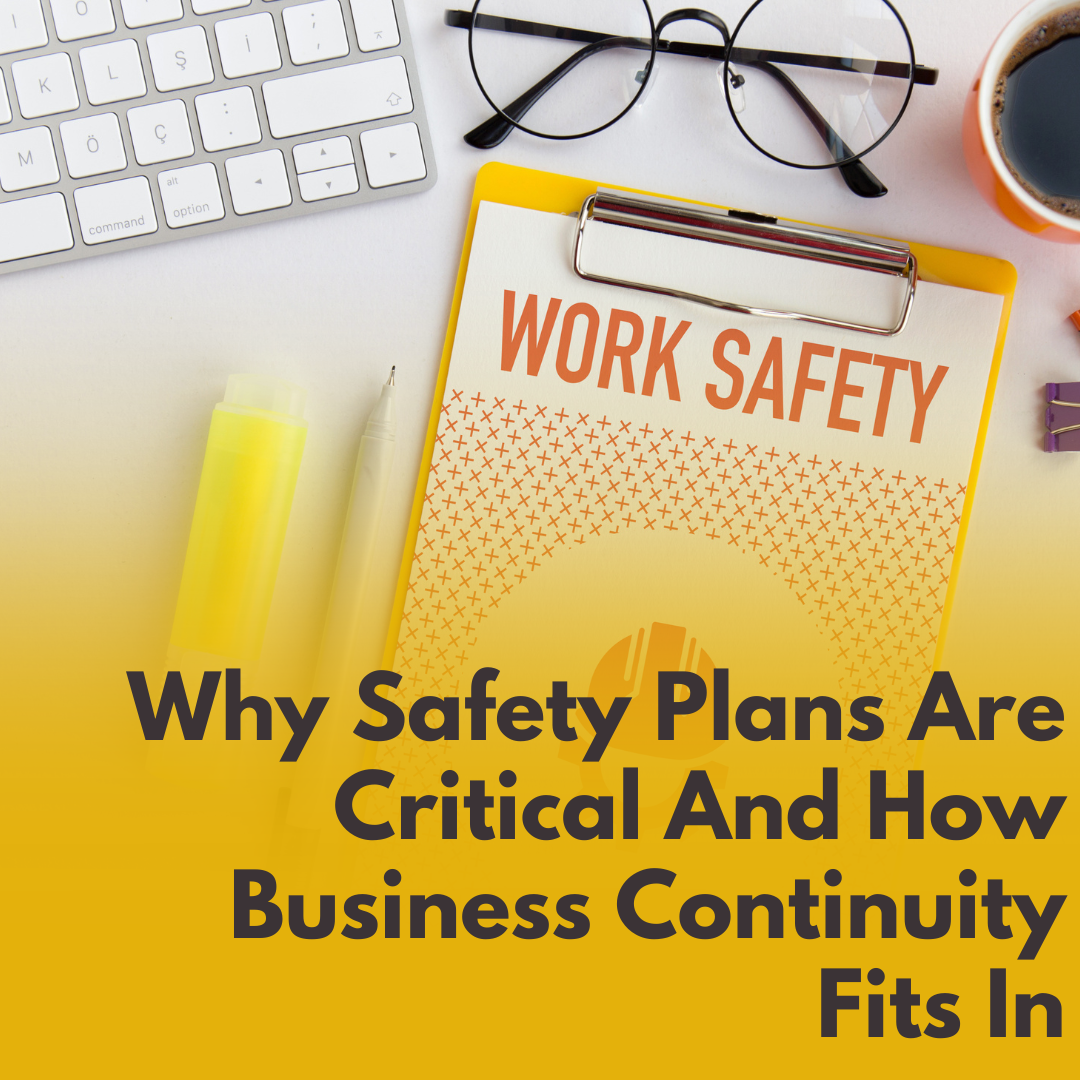Why Safety Plans Are Critical And How Business Continuity Fits In
A strong safety plan isn’t just a regulatory requirement. It’s the foundation of a stable, resilient business. Whether you're running a construction firm, managing a hospital, or operating a logistics hub, your people, processes, and operations are exposed to risk every day. That’s where safety planning comes in and right alongside it, business continuity.
In this post, we’ll explore the industries where safety planning is essential and break down how business continuity fits into the bigger picture of keeping your operations running, no matter what.
Industries That Must Have a Safety Plan
Some industries are required by law to implement safety programs. But even beyond compliance, having a robust safety plan protects your team, limits liability, and builds trust.
Here are some of the industries where safety planning is non-negotiable:
1. Construction
With heavy machinery, fall hazards, and dynamic job sites, construction companies must have comprehensive safety programs that include site-specific plans, emergency procedures, and training for all workers.
2. Manufacturing
From chemical exposure to machine-related injuries, manufacturing environments demand strict safety protocols, hazard communication, and emergency response planning.
3. Healthcare
Hospitals and clinics face both patient safety and worker safety risks think infectious diseases, sharp injuries, and workplace violence. Safety planning here must also integrate infection control and evacuation procedures.
4. Energy and Utilities
Working with electricity, oil, or gas involves high-risk environments. Safety plans in this sector focus on regulatory compliance, incident response, and environmental protection.
5. Transportation and Logistics
Drivers, warehouse workers, and dispatch teams all face unique risks. Safety plans include driver safety programs, material handling protocols, and fatigue management strategies.
6. Education and Public Institutions
Schools, universities, and public facilities need plans for fire drills, active threat scenarios, and emergency evacuations to keep staff, students, and visitors safe.
Where Business Continuity Comes In
A safety plan protects people. A business continuity plan protects your ability to keep operating.
Business continuity planning is the process of identifying critical operations and ensuring your organization can recover quickly from disruptions whether that’s a natural disaster, cyberattack, equipment failure, or public health crisis.
Think of it this way: safety planning focuses on preventing incidents, while business continuity focuses on responding to them.
What a Business Continuity Plan Includes
Here’s what an effective business continuity plan typically covers:
1. Risk Assessment and Impact Analysis
Identify the most likely threats to your operations and assess the impact if key functions are interrupted.
2. Continuity Strategies
Plan how to maintain essential services. This might include remote work setups, backup vendors, or alternate worksites.
3. Emergency Response Procedures
Who does what, and when? From evacuations to communication protocols, clarity is key in a crisis.
4. Communication Plans
How will you keep employees, customers, and stakeholders informed during a disruption? This includes internal alerts and public updates.
5. Recovery Plans
Once the immediate crisis is handled, how do you get back to normal? This section outlines the steps to resume full operations.
6. Training and Testing
A plan is only as good as your team’s ability to use it. Regular training and simulations help reinforce the procedures.
Safety + Continuity = Resilience
When your safety plan is integrated with your business continuity plan, your organization is prepared not just to protect people, but to survive and adapt in the face of disruption.
At Nano Safety & Security, we help companies build safety programs that do more than check boxes they support long-term resilience. We also offer support in developing business continuity strategies tailored to your industry, workforce, and risk profile.
Need Help Developing a Safety or Business Continuity Plan?
Let’s talk. Whether you’re starting from scratch or updating existing programs, our team is ready to support your safety and resilience goals.


